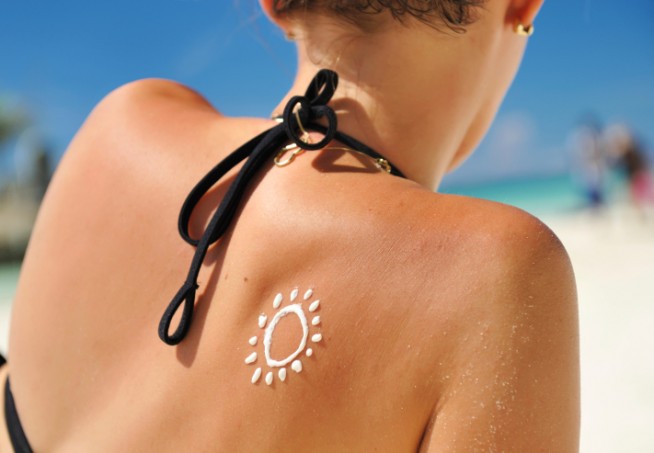For decades now, the mainstream medical establishment has been bombarding us with warnings to stay out of the sun—“Use 50 SPF sunscreen! Stay indoors till sunset! Wear a burka at the beach!”
But has the case against sun exposure been taken perhaps a bit too far? I certainly think so. With the rise of “sun-o-phobia” what’s gotten lost in the shuffle is the fact that there are actual benefits to sun exposure in limited doses. Recent studies have shown that optimizing your Vitamin D levels may actually help prevent as many as sixteen different types of cancers. And the best way to optimize Vitamin D levels? Safe, smart, and limited sunscreen-free exposure to the sun. Exposure helps the skin produce the Vitamin D it needs to build bones, quell inflammation, bolster the immune system, and protect against cancer (including skin cancer). Now of course this is by no means a license to overdo it. But it consider it permission to step outside and into the sun a bit less fearfully!
So how to use the sun to your advantage? Here’s what I recommend:
Manage your dose. Have a healthy respect for the sun. It is a powerful medicine with potentially dangerous side effects on your skin. Treat it like medication, using the lowest dose necessary, but don’t avoid it completely. And remember, never, ever fall asleep in the sun without protection.
Always avoid sunburn. It is sunburn, not healthy sun exposure that causes problems. Repeated sunburns, especially in children and very fair-skinned people, have been linked to melanoma. Whereas there is no credible scientific evidence that regular, moderate sun exposure causes melanoma or other skin cancers, so prepare your skin and build up tolerance gradually. Start early in the year (spring), or early in the morning before the sun is strongest and slowly build up the amount of time you spend in the sun.
Make your own sunscreen. Boost your “internal sunscreen” by consuming anti-oxidants and beneficial fats. These strengthen skin cells, helping to protect them from sun damage. Eating lots of vegetables and fruits such as blueberries, raspberries, goji berries, and pomegranates and supplementing with green powdered mixes and fish oils help prep your body for limited, careful sun exposure.
Get frequent, short exposures. Regular short exposures have been found to be much more effective and safer than intermittent long ones. Note that you cannot generate Vitamin D when sitting behind a glass window, because the UVB rays necessary for Vitamin D production are absorbed by glass. Get fifteen to thirty minutes of unprotected sun exposure two to four times a week. Each of us has different needs for unprotected sun exposure to maintain adequate levels of Vitamin D. Depending on your age, what type of skin you have, where you live, and what time of the day and year it is, your need will vary. For more specifics, I recommend the tables in The Vitamin D Solution by Dr Michael Holick.
Know when to stop. After your fifteen to thirty minutes of sunblock-free time in the sun, you must protect yourself. If you’re going to be out in the sun for longer periods, wear a hat to protect your face and light-colored clothing that blocks the sun and keeps you cool. When you do apply sunscreen, use one the fewest chemicals possible.
Check out the recipe…of your sunscreen that is. What’s in the tube in high doses can be almost as dangerous as the diseases they are said to prevent, so shop smart when it comes to sunscreens. A typical sunscreen product is a chemical assault on your body, many of which contain cancer-causing chemicals. According to the Environmental Working Group, the best, as in least toxic sunscreens on the market are ones without PABA, Parabens, Fragrances, Nanoparticles, Retinyl Palmitate (a form of Vitamin A), Oxybenzone, Benzophenone-3 (B-3) and Amino Benzoic Acid, whose side effects can include a host of health horrors which can effect your heart, hormones, and even your DNA!
Buy the good stuff. The best sunscreen is a hat and a shirt. No chemicals to absorb through the skin, no questions about whether they work. But when you are going to be in the sun for long periods, use EWG’s top-rated sunscreens to provide broad-spectrum (UVA and UVB-sunburn) protection with fewer hazardous chemicals that penetrate the skin.
Dr. Frank Lipman is an acclaimed Integrative Physician and the founder and director of the Eleven Eleven Wellness Center in New York City. For over 20 years his personal brand of healing has helped thousands of people reclaim their vitality and recover their zest for life. Focused on sustainable wellness—instead of quick fixes—he offers patients a customized blend of Western medicine with acupuncture, nutritional counseling, vitamins and herbs, relaxation techniques, physical therapy, and bodywork. In 2010 he developed Be Well by Dr. Frank Lipman, a line of leading-edge supplements and health programs. He is the author of Revive: Stop Feeling Spent and Start Living Again and Total Renewal: 7 Key Steps to Resilience, Vitality and Long-Term Health.
For more on Dr. Lipman, please visit his resourceful WEBSITE or on FACEBOOK or TWITTER.












